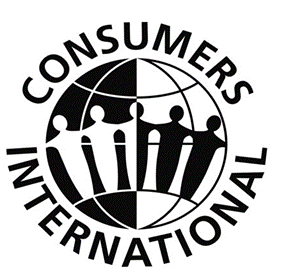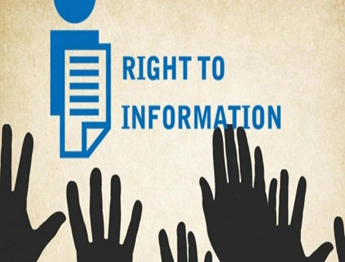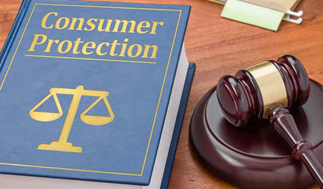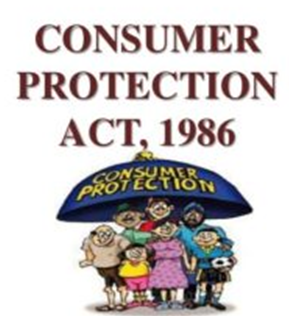Market
- Books Name
- Understanding Economic Development Class-10
- Publication
- PathSet Publications
- Course
- CBSE Class 10
- Subject
- Economics
MARKET
- We participate in the market as both producers and consumers. As producers of goods and services, we could be working in any of the sectors and as consumers; we participate in the market when we purchase goods and services.
- As you can see, there are certain rules and regulations that protects the workers from being exploited at the workplace.
- Similarly, to protect the consumers from being exploited, there are certain rules and regulations for the same.

- Exploitation in the marketplace happens in various ways. For example, sometimes traders indulge in unfair trade practices such as when shopkeepers weigh less than what they should or when traders add charges that were not mentioned before, or when adulterated/defective goods are sold.
- Markets do not work in a fair manner, especially when large companies are producing these goods. These companies with huge wealth, power and reach can manipulate the market in various ways.
- At times false information is passed on through the media, and other sources to attract consumers. For example, a long battle had to be fought with court cases to make cigarette-manufacturing companies accept that their product could cause cancer. Thus, rose the need for the protection of consumers.
CONSUMER’S MOVEMENT
- For a long time, it was the responsibility of consumers to be careful while buying the product.
- There was no legal system available to consumers to protect them from exploitation in the marketplace.
- It took many years for organizations in India, and around the world, to create awareness amongst people and to shift the responsibility from the consumer to the seller.
- In India, the consumer movement as a ‘social force’ originated with the necessity of protecting and promoting the interests of consumers against unethical and unfair trade practices.

- Rampant food shortages, hoarding, black marketing, adulteration of food and edible oil gave birth to the consumer movement in an organized form in the 1960s.
- Until the 1970s, consumer organizations were largely engaged in writing articles and holding exhibitions.
- They formed consumer groups to look into the malpractices in ration shops and overcrowding in the road passenger transport. More recently, India witnessed an upsurge in the number of consumer groups.
- In 1985, United Nations adopted the UN Guidelines for Consumer Protection, which worked as a tool for nations to adopt measures to protect consumers and for consumer advocacy groups to press their governments to do so.
- This led to building pressure on business organizations and the government. Thus a major step took place in 1986 by the Indian government i.e. the enactment of the Consumer Protection Act 1986, popularly known as COPRA.
Different rights
- Books Name
- Understanding Economic Development Class-10
- Publication
- PathSet Publications
- Course
- CBSE Class 10
- Subject
- Economics
DIFFERENT RIGHTS
- After years of campaigns and awareness programs, there are certain rights that have been introduced to ensure that the consumers are not exploited. Let us look at them.
SAFTEY, INFORMATION, CHOICE
RIGHT TO SAFTEY:
- While using many goods and services, we as consumers, have the right to be protected against the marketing of goods and delivery of services that are hazardous to life and property.
- Producers need to strictly follow the required safety rules and regulations. There are many goods and services that we purchase that require special attention to safety.
- For example, pressure cookers have a safety valve, which, if it is defective, can cause a serious accident. The manufacturers of the safety valve have to ensure high quality.
- Public or government action is also required to see that this quality is maintained.
RIGHT TO INFORMATION
- Consumers have the right to be informed about the particulars of goods and services that they purchase.
- Consumers can then complain and ask for compensation or replacement if the product proves to be defective in any manner.

- These details are about ingredients used, price, batch number, date of manufacture, expiry date, direction for use, address of manufacture etc.
- For example, if we buy a product and find it defective well within the expiry period, we can ask for a replacement. If let us, say the expiry is not there, the manufacturer will shift the responsibility on the shopkeeper.
- Similarly, one can protest and complain if someone sells a good at more than the printed price on the packet. This is indicated by ‘MRP’ — maximum retail price.
- In October 2005, the Government of India enacted a law, popularly known as RTI (Right to Information) Act, which ensures its citizens all the information about the functions of government departments.
RIGHT TO CHOICE
- Any consumer who receives a service in whatever capacity, regardless of age, gender and nature of service, has the right to choose whether to continue to receive the service.
- You cannot be forced to buy any product from a particular vendor.
RIGHT TO SEEK REDRESSAL

RIGHT TO REPRESENT:
- The Act has enabled us as consumers to have the right to represent in the consumer courts.
Right to justice
- Books Name
- Understanding Economic Development Class-10
- Publication
- PathSet Publications
- Course
- CBSE Class 10
- Subject
- Economics
RIGHT TO JUSTICE

- As we previously studied, the consumer has every right to seek redressal. For this, certain simple steps have to be followed.
- The aggrieved person can first talk to the party that has done the misconduct.
- If the other party’s action is not satisfactory, the aggrieved person can take the matter into their own hands.
- The consumer can file a complaint before the appropriate consumer forum on his/her own with or without the services of lawyers.
- The aggrieved party has to fill out a registration form at the consumer court who then notifies the other party.
- At the court, the judge verifies documents, hears the arguments of both the parties, and then announces the verdict.
- The consumer movement in India has led to the formation of various organizations, locally known as consumer forums or consumer protection councils.
- They guide consumers on how to file cases in the consumer court. On many occasions, they also represent individual consumers in consumer courts. These voluntary organizations also receive financial support from the government for creating awareness among people.
- Under COPRA, three-tier quasi-judicial machinery at the district, state and national levels was set up for redressal of consumer disputes.
- The district-level court called District Forum deals with cases involving claims up to Rs 20 lakh.
- The state-level court called State Commission between Rs 20 lakh and Rs 1 crore.
- The national-level court — National Commission — deals with cases involving claims exceeding Rs 1 crore. If a case is dismissed in district-level court, a consumer can also appeal in the state and then in national-level courts.
LEARNING TO BE WELL INFORMED CONSUMERS
- When we as consumers become conscious of our rights, while purchasing various goods and services, we will be able to discriminate and make informed choices.
- However, how do we become one?
- The enactment of COPRA has led to the setting up of separate departments of Consumer Affairs in central and state governments. Through various means, the government spread information about legal processes, which people can use.

- Certain logos and certifications like ISI, Agmark, Hallmark, help consumers get assured of quality while purchasing the goods and services. The organizations that monitor and issue these certificates allow producers to use their logos provided they follow certain quality standards.
- It is not compulsory for all organizations but is mandatory for those products that can be hazardous to human lives. Example: LPG cylinders, food colours and additives, cement, packaged drinking water, etc.
- India has been observing 24 December as National Consumers’ Day. It was on this day that the Indian Parliament enacted the Consumer Protection Act in 1986.
- There are today more than 700 consumer groups in the country of which only about 20-25 are well organized and recognized for their work
- However, the consumer redressal process is becoming cumbersome, expensive and time-consuming.
- In most purchases cash memos are not issued hence, evidence is not easy to gather. Moreover, most purchases in the market are small retail sales. The existing laws also are not very clear on the issue of compensation to consumers injured by defective products.
- Despite the very shortcomings in the laws and implementation of the rules and regulations, we as consumers can make voluntary efforts by active participation in consumer movements.

 PathSet Publications
PathSet Publications
